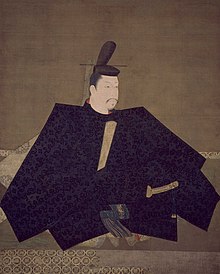710 ⟶ Genmei Shifts Capital to Heijō-kyū, Beginning the Nara Period
Empress Genmei moves the capital to Heijō-kyū (present day N...Year
701
710
794
1192
1392
1912
📜 Taihō Code Enacted
The Taihō Code is enacted in late Asuka period Japan.⟶

Japanese HistoryAsuka PeriodLegal CodeGovernanceCentralizationEmperorPolitical ReformBureaucracy
 Japan
Japan🏯 Genmei Shifts Capital to Heijō-kyū, Beginning the Nara Period
Empress Genmei moves the capital to Heijō-kyū (present day Nara), initiating the Nara period of Japan.⟶

Japanese HistoryCapital CityEmpressPolitical TransitionImperial CourtGovernance
 Japan
Japan🏯 Emperor Kanmu Establishes Heian-kyō as Capital
Emperor Kanmu moves the capital to Heian-kyō (present day Kyoto), initiating the Heian period of Japan.⟶

Heian PeriodJapanese HistoryPolitical ChangeImperial JapanGovernance
 Japan
Japan🛡️ Minamoto no Yoritomo Appointed Shōgun
Minamoto no Yoritomo is appointed Sei-i Taishōgun, "barbarian-subduing great general", shōgun for short, the first military dictator to bear this title.⟶

FeudalismShogunateMilitary DictatorshipKamakura PeriodPolitical TransitionJapanese HistorySamuraiGovernance
 Japan
Japan👑 Emperor Go-Kameyama Abdicates, Ending Nanboku-chō Period
Emperor Go-Kameyama of Japan abdicates in favor of rival claimant Go-Komatsu, in order to end the Nanboku-chō period of conflict between the Northern and Southern imperial courts.⟶

EmperorImperial CourtCivil WarAbdicationPolitical TransitionMiddle AgesGovernance
 Japan
Japan👑 Emperor Meiji's Death and Accession of Emperor Taishō
July 30: Emperor Meiji dies, ending the Meiji era; his son, the Emperor Taishō, becomes Emperor of Japan.⟶

MonarchyEmperorSuccessionJapanese HistoryPolitical Transition
 Japan
Japan